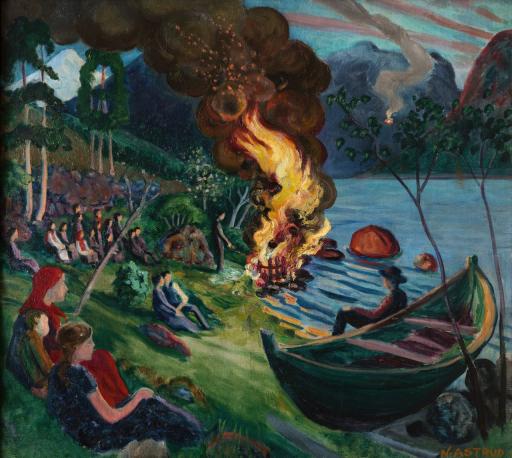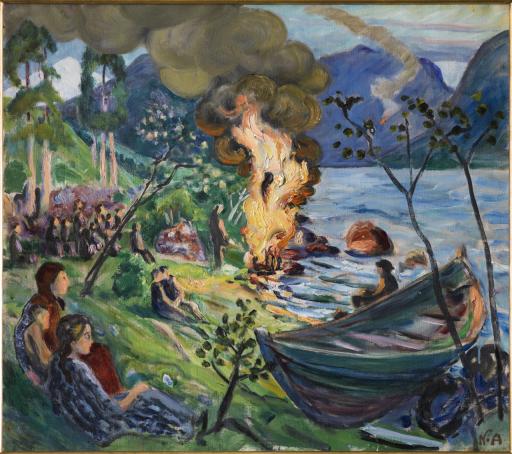Provenance
-1924-1928:
Artist
Nikolai Astrup
(1880-1928)
1928-1954-:
By descent, to
Engel Astrup
(1892-1966)
-1954-1972:
Purchased by
Hilmar August Reksten
(1897-1980)
-1991-2001:
N. N.
2005-current:
Purchased by
Private owner
2008-current:
On deposit to
Griegsamlingen (Oseana Kunst og kultursenter) (The Grieg Collection (Oseana Kunst- og kultursenter))
Exhibition history
Solo exhibition
1928-11-11 - 1928-12-9
Nikolai Astrup. Mindeutstilling
Kristiania (Oslo)
Catalogue number 115
See exhibition
1980-3-14 - 1980-4-7
Nikolai Astrup 1880–1928. Maleri, tegning, grafikk
Bergen
Catalogue number 79
See exhibition
1980-4-12 - 1980-5-4
Nikolai Astrup 1880–1928. Maleri, tegning, grafikk
Oslo
Catalogue number 79
See exhibition
1980-6-4 - 1980-6-29
Nikolai Astrup 1880–1928. Maleri, tegning, grafikk
Trondheim
Catalogue number 79
See exhibition
Group exhibition
Bibliography
Kunstnernes Hus. Nikolai Astrup. Malerier og tresnitt. Oslo: Kunstnernes Hus, 1955.
Bergens Kunstforening. Nikolai Astrup 1880–1928. Mindeutstilling. Bergen: Bergens kunstforening, 1928.
Kunstforeningen i København. Nikolai Astrup 1880–1928. København: Kunstforeningen i København, 1965.

